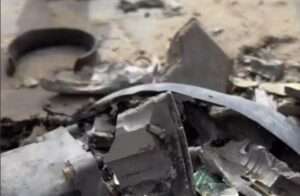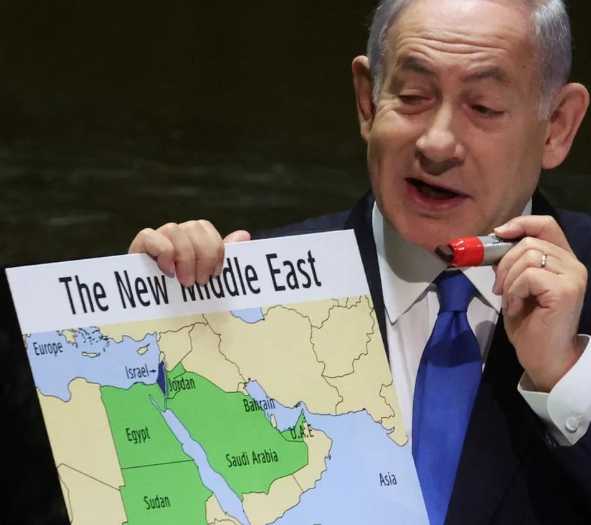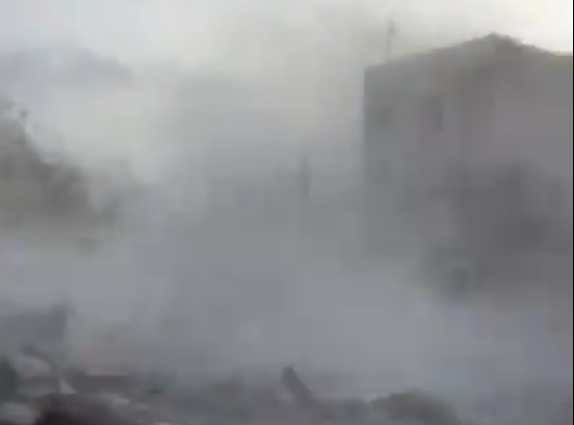“How many more charred corpses does he have to see before the president considers a change in policy?” a CBS News reporter asked a White House official following the massacre.

Israel used U.S.-made bombs in its attack on a camp of displaced Palestinians outside Rafah that killed dozens on Sunday night, according to analyses from bothThe New York Timesand CNN.
Humanitarian groups had condemned the Israeli strike, which killed at least 45, mostly women and children, and injured more than 240. The attack left medical personnel dealing with charred corpses and missing limbs. An expert at the Council on American-Islamic Relations called it a “U.S.-backed massacre.”
Using videos from the site of the attack, weapons experts identified remnants of GBU-39s, which are relatively small bombs designed and manufactured by Boeing in the U.S. One expert, interviewed by the Times and CNN, said that the tail actuation unit of the GBU-39 was visible, helping with identification of the weapon.
New analysis via @trbrtc, @robinnyc7, and @heytherehaley that the bomb dropped near the Rafah IDP tent camp was manufactured in the US. https://t.co/wp4AdlbufP
First person I saw with a correct ID of the munition was @Easybakeovensz, props to him: https://t.co/mTk8p7mngg
— Aric Toler (@AricToler) May 29, 2024
The news outlets indicated that at least some of the parts for the GBU-39s were also manufactured in the U.S., which experts were able to determine thanks to visible serial numbers and unique identifier codes. The Times cited Woodward, an aerospace manufacturer based in Colorado, as a manufacturer of one of the parts, while CNN cited an unnamed California parts manufacturer.
Israel’s military has said that Sunday’s strike was aimed at two Hamas leaders who were killed by the bombs. An Israeli military spokesperson told reporters at a Tuesday briefing that the bombs weighed 37 pounds—matching the weight of GBU-39s, though he didn’t confirm the type of bomb that was used—and argued that they were too small to have started the large fire that erupted at the camp site. He said that the fire may have been a secondary explosion due to weapons being stored there.
The Biden administration used the bomb size as evidence that Israel’s military had made an effort to be targeted in its attack. GBU-39s are more precise than other weapons that the U.S. has provided to Israel—including 2,000-pound bombs—and the Biden administration has encouraged Israel to use them so as to limit civilian casualties.
“The Israelis have said they used 37-pound bombs,” John Kirby, a White House spokesperson, said at a press conference on the massacre on Tuesday. “If it is in fact what they used, it is certainly indicative of an effort to be discreet and targeted and precise.”
Kirby said that Israel had not yet crossed President Joe Biden’s “red line“—a threat to withdraw military aid if Israel invades Rafah—because its military was taking action in a corridor outside Rafah, rather than making a full-scale ground operation into the city.
“How many more charred corpses does he have to see before the president considers a change in policy?” CBS News‘ Ed O’Keefe asked in response, prompting Kirby to “flip out,” according toThe New Republic‘s Hafiz Rashid.
International condemnation of Israel, including an International Court of Justice ruling that Israel must stop its offensive in Rafah, hasn’t stopped the U.S. from supporting the war effort. Last month, Biden signed a foreign aid bill that allotted billions in unconditional military assistance to Israel, and the White House announced another $1 billion in arms shipments on May 14.
Israeli Prime Minister Benjamin Netanyahu called the Sunday attack a “tragic mistake” on Monday, but the Israeli military engaged in a similar attack on a Palestinian refugee camp in Gaza on Tuesday, killing at least 21.
This post has been updated to correct Ed O’Keefe’s question to John Kirby.
Common Dream’s work is licensed under a Creative Commons Attribution-Share Alike 3.0 License. Feel free to republish and share widely.
[content id=”79272″]




